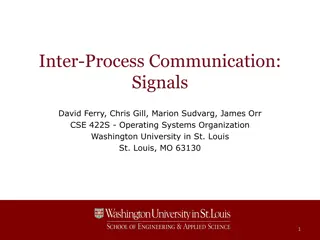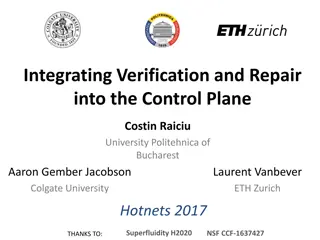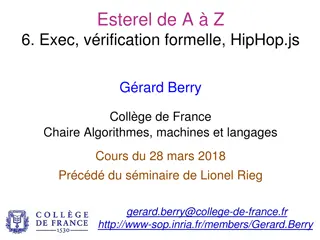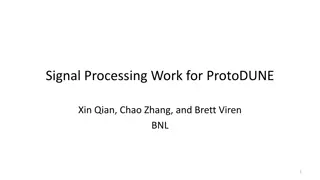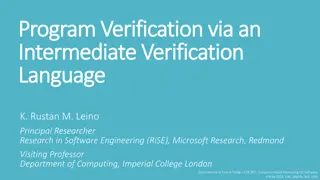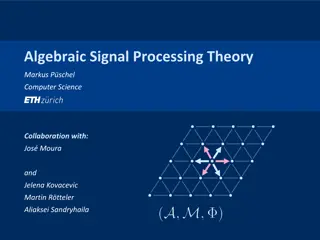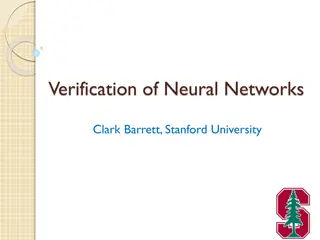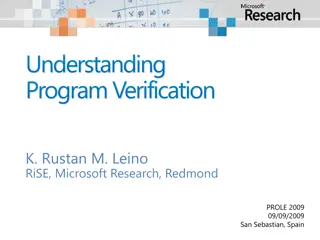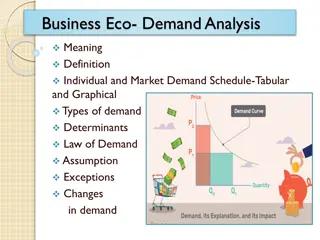
Enhancing Demand Response Signal Verification in Automated Systems
This presentation discusses enhancing demand response signal verification in automated systems using OpenADR, focusing on communication models, security measures, and a proposed solution for improving the verifiability of DR signal distribution paths.
Download Presentation

Please find below an Image/Link to download the presentation.
The content on the website is provided AS IS for your information and personal use only. It may not be sold, licensed, or shared on other websites without obtaining consent from the author. If you encounter any issues during the download, it is possible that the publisher has removed the file from their server.
You are allowed to download the files provided on this website for personal or commercial use, subject to the condition that they are used lawfully. All files are the property of their respective owners.
The content on the website is provided AS IS for your information and personal use only. It may not be sold, licensed, or shared on other websites without obtaining consent from the author.
E N D
Presentation Transcript
1 Enhancing Demand Response Signal Verification in Automated Demand Response Systems Daisuke Mashima, Ulrich Herberg, and Wei-Peng Chen SEDN (Solutions for Electricity Distribution Networks) Group Fujitsu Laboratories of America, Inc.
2 What is OpenADR? Internationally-recognized, and the most widely adopted standard for automated demand response Defined as a subset of OASIS Energy Interoperation version 1.0 The latest 2.0 b profile was released in August, 2013.
3 OpenADR Communication Model Communication nodes are organized as a tree HTTP and XMPP as transport mechanisms DR Aggregator Utility/ ISO/RTO HEMS, Thermostat, Smart Appliance etc. BEMS Top-most VTN Intermediary Virtual End Node (VEN): DR Client Virtual Top Node (VTN): DR Server End-most VEN
4 Security in OpenADR Mandates use of TLS with client authentication All nodes are equipped with a key pair and certificate Message (e.g., DR event signal) integrity and confidentiality Mutual Authentication Optionally supports XML Signature for non- repudiation Sufficient for establishing one-hop security, but
5 Problem in Multi-hop DR Communication What happens if intermediary is compromised or misbehaving? How can downstream entities detect the problem/attack? Impact of malicious DR signal could be broad!
6 Proposed Solution Provide end-most VENs with verifiable information to make informed decision Entities involved in DR signal distribution path Contents of the DR signal issued by the top-most VTN. Does not violate OpenADR 2.0 specification In OpenADR 2.0b schema, eiEvent:eventDescriptor:vtnComment can accommodate arbitrary text data, under which we can embed additional data.
7 Verifiable DR Signal Distribution Path Implemented as the chain of digital signatures T s DR Signal Top-most VTN (T) A s DR Signal Compared to evaluate consistency P1=[M, A]T Metadata that uniquely identifies the DR Signal B s DR Signal A P2=[P1, B]A B E verifies P1, P2, and P3 in order, which establishes verifiable path. - Verification of P1: T A - Verification of P2 : T A B P3=[P2, E]B End-most VEN (E)
8 Implementation Top-most VTN Compressed with EXI (Efficient XML Interchange) Then encoded by Base64 EXI-encoded eiEvent Recipient ID (ID1) Signature (P1) Metadata M is calculated based on the original message or EXI-encoded message, which is then signed with the recipient ID
9 Implementation Intermediary Intermediary generates its own DR signal based on the one from the upstream Other intermediaries processes similarly DR signal from Top-most VTN DRtop DRtop DRtop Copy ID1 P1 ID1 P1 ID1 P1 Copy ID2 P2 ID2 P2 ID3 P3
10 Extension for Privacy DR signal issued by the top-most VTN may contain information that end-most VEN does not need to know . It is desired to allow intermediaries to appropriately hide some portion of the top-most VTN s DR event signal, without invalidating the discussed schema. Redactable signature scheme to create M and P1 Implemented Merkle Hash Tree based scheme Please refer to the paper for more detail.
11 Performance Summary Setting for measurements: Laptop with Intel Core i7 processor and 8GB RAM 2048-bit RSA and SHA256 Processing time (average of 10 executions) Top-most VTN: 23.4ms Intermediary: 22.7ms Verification at end-most VEN: 15ms Message size overhead 50-60% of the original eiEvent 300-400 Byte per hop
12 Conclusions Implemented extended DR event signal verification under OpenADR specification Verifiable DR signal distribution path Verification of semantic consistency of DR signals Can be integrated into existing OpenADR systems Future Direction Improve the scheme for lower overheads Proposal to OpenADR Alliance
13 Thanks! Please direct your questions and comments to: dmashima@us.fujitsu.com




